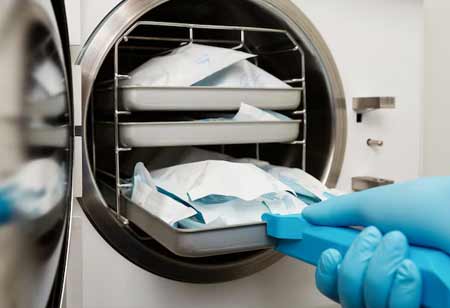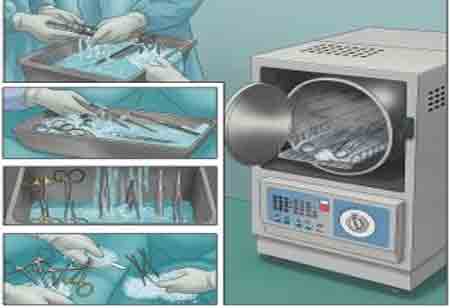Thank you for Subscribing to Healthcare Business Review Weekly Brief
Be first to read the latest tech news, Industry Leader's Insights, and CIO interviews of medium and large enterprises exclusively from Healthcare Business Review
Medical Device Sterilization Techniques: A Comprehensive Overview
Determining the appropriate sterilization method for your medical device can be complex. Fortunately, a suitable contract sterilization partner can collaborate with you to ascertain the most effective technique for your product and schedule.

By
Healthcare Business Review | Monday, October 27, 2025
Stay ahead of the industry with exclusive feature stories on the top companies, expert insights and the latest news delivered straight to your inbox. Subscribe today.
Fremont, CA: Selecting an appropriate contract sterilization partner for your medical devices involves numerous considerations. In addition to evaluating their capabilities, experience, and the expertise of their personnel, as well as the quality of their facilities, they must provide a range of sterilization services tailored to the specific needs of your device. Below is an overview of prevalent sterilization methods and a list of ideally suited devices for each technique.
Medical Device Sterilization Methods
To reduce the chances of infection in patients, all medical devices must undergo proper sterilization before their use. The primary objective of sterilizing medical devices is to eliminate or eradicate all types of microbial life, thereby ensuring the device's safety for both the end user and the patient. This requirement applies regardless of whether the device is categorized as critical or semi-critical based on its level of invasiveness. Sterilization can be achieved through either physical or chemical methods and is subject to regulation by governmental and other authoritative bodies.
Some of the standard methods of sterilization are:
Steam Sterilization
Steam sterilization is used extensively and is regarded as the most cost-effective method. It is non-toxic and operates swiftly in a gravity displacement autoclave or a high-speed pre-vacuum sterilizer. This sterilization technique involves exposing instruments to direct steam for a specified duration and the requisite pressure and temperature to effectively eliminate microorganisms. The efficacy of steam sterilization is monitored using biological indicators.
However, steam sterilization is unsuitable for electronic components, including implantable sensor systems, fiber optics, biological materials, or most polymers. Additionally, high-carbon steels may suffer from corrosion and dullness, although this can be alleviated by applying an anti-corrosive solution before autoclave processing. The most appropriate devices for steam sterilization include:
• Surgical instruments
• Implantable medical devices
• Flexible liquid containers (such as blood and solution bags)
•Syringes
• Vials.
Ethylene Oxide (EtO) Sterilization
Ethylene oxide (EtO) sterilization is extensively utilized for many contemporary medical devices and, in numerous instances, represents the sole sterilization technique that is both effective and non-damaging to the device.
This sterilization approach employs a biological indicator, with various options available, in conjunction with a process challenge device that undergoes one complete sterilization cycle and three partial cycles. The biological indicator is then assessed for viable organisms to ascertain whether all have been effectively eliminated. This evaluation is essential for determining the concentration, temperature, and relative humidity required to eradicate all microorganisms on the device. EtO sterilization is particularly effective on materials such as plastics or resins, metals, glass, and multi-layer packaging.
Devices that are ideally suited for EtO sterilization include:
• Heart valves
• Pacemakers
• Surgical kits
• Syringes
• Catheters
• Ventilators
Gamma (Irradiation) and E-Beam Sterilization
Gamma irradiation is referred to as a "cold process" because it does not significantly raise the temperature of the medical device during sterilization. This characteristic makes it particularly suitable for devices that are sensitive to heat. Gamma rays, akin to X-rays, provide a higher intensity of electromagnetic radiation capable of penetrating materials like plastic to eliminate bacteria by disrupting their division. Importantly, this method does not result in any residual radioactivity.
E-beam sterilization resembles gamma irradiation, as both utilize ionizing energy but differ in dosage rates and penetration levels. Your contract manufacturer can determine the more appropriate method for your specific device.
Gamma irradiation is effective for sterilizing various medical devices, including:
• Plastic syringes
• Hypodermic needles
• Scalpels
• Surgical blades
• Adhesive dressings.






